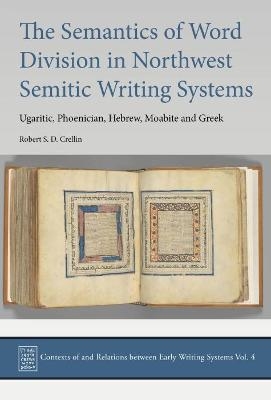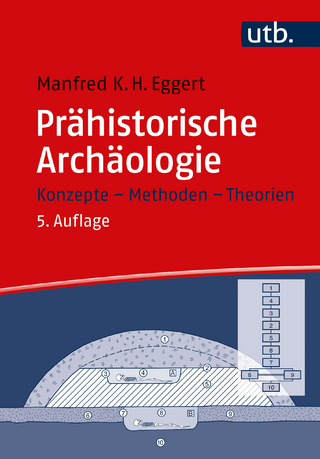
The Semantics of Word Division in Northwest Semitic Writing Systems
Oxbow Books (Verlag)
978-1-78925-677-2 (ISBN)
Much focus in research on alphabetic writing systems has been on correspondences between graphemes and phonemes. The present study sets out to complement these by examining the linguistic denotation of markers of word division in several ancient Northwest Semitic (NWS) writing systems, namely, Ugaritic, Phoenician, Moabite, and Hebrew, as well as alphabetic Greek. While in Modern European languages words on the page are separated on the basis of morphosyntax, I argue that in most NWS writing systems words are divided on the basis of prosody: ‘words’ are units which must be pronounced together with a single primary accent or stress, or as a single phrase.
After an introduction providing the necessary theoretical groundwork, Part I considers word division in Phoenician inscriptions. I show that word division at the levels of both the prosodic word and of the prosodic phrase may be found in Phoenician, and that the distributions match those of prosodic words and prosodic phrases in Tiberian Hebrew. The latter is a source where, unlike the rest of the material considered, the prosody is well represented. In Part II, word division in Ugaritic alphabetic cuneiform is analysed. Here two-word division strategies are identified, corresponding broadly to two genres of text: viz, literary, and administrative documents. Word division in the orthography of literary and of some other texts separates prosodic words. By contrast, in many administrative (and some other) documents, words are separated on the basis of morphosyntax, anticipating later word division strategies in Europe by several centuries. Part III considers word division in the consonantal text of the Masoretic tradition of Biblical Hebrew. Here word division is found to mark out ‘minimal prosodic words’. I show that this word division orthography is also found in early Moabite and Hebrew inscriptions. Word division in alphabetic Greek inscriptions is the topic of Part IV. Whilst it is agreed that word division marks out prosodic words, the precise relationship of these units to the pitch accent and the rhythm of the language is not so clear, and consequently this issue is addressed in detail. Finally, the Epilogue considers the societal context of word division in each of the writing systems examined, to attempt to discern the rationales for the prosodic word division strategies adopted.
Contexts of and Relations between Early Writing Systems (CREWS) is a project funded by the European Research Council under the European Union’s Horizon 2020 research and innovation programme (grant agreement No. 677758), and based in the Faculty of Classics, University of Cambridge.
Robert Crellin is a research associate at the University of Cambridge. He completed his PhD in Ancient Greek linguistics in 2012, and has since worked and written on various aspects of the linguistics of Indo-European and Semitic languages.
Acknowledgements
Abbreviations
1. Introduction
1.1. What is a word?
1.2. Why Northwest Semitic and Greek?
1.3. Wordhood in writing systems research
1.4. Linguistic levels of wordhood
1.5. Word division at the syntax-phonology interface
1.6. Previous scholarship
1.7. Method
1.8. Outline
Part I Phoenician
2. Introduction
2.1. Overview
2.2. Literature review
2.3. Corpus
2.4. Linguistic and sociocultural identity of the inscriptions
2.5. Proto-alphabetic
2.6. Shared characteristics of word division
2.7. Divergence in word division practice
3. Prosodic words
3.1. Introduction
3.2. Distribution of word division
3.3. Graphematic weight of function words
3.4. Morphosyntax of univerbated syntagms
3.5. Sandhi assimilation
3.6. Comparison of composition and distribution with prosodic words in Tiberian Hebrew
3.7. Conclusion
4. Prosodic phrase division
4.1. Introduction
4.2. Syntax of univerbated syntagms
4.3. Comparison with prosodic phrases in Tiberian Hebrew
4.4. Syntactic vs. prosodic phrase level analysis
4.5. Verse form
4.6. Conclusion
Part II Ugaritic alphabetic cuneiform
5. Introduction
5.1. Overview
5.2. Literature review
5.3. Basic patterns of word division and univerbation
5.4. Exceptions to the basic patterns of word division
5.5. Line division
5.6. Contexts of use
5.7. Textual issues
5.8. Inconsistent nature of univerbation
5.9. Hypothesis: Graphematic words represent actual prosodic words
6. The Ugaritic ‘Majority’ orthography
6.1. Introduction
6.2. Syntagms particularly associated with univerbation
6.3. Univerbation with nouns
6.4. Univerbation with verbs
6.5. Univerbation with suffix pronouns
6.6. Univerbation at clause and phrase boundaries
6.7. Summary
7. Quantitative comparison of Ugaritic and Tiberian Hebrew
7.1. Introduction
7.2. Corpus
7.3. Frequency of occurrence
7.4. Length of phrase
7.5. Quantifying the morphosyntactic collocation of linking features
7.6. Measuring Association Score B for Ugaritic and Tiberian Hebrew
7.7. Visualising morphosyntactic collocation of linking features with MDS
7.8. Conclusion
8. Semantics of word division in the Ugaritic ‘Majority’ orthography: prosodic word or prosodic phrase
8.1. Introduction
8.2. Graphematic wordhood in the Ugaritic ‘Majority’ orthography
8.3. Consistency of the representation of ACTUAL PROSODIC WORDHOOD in Ugaritic
8.4. Univerbation at clause boundaries
8.5. Adoption of the ‘Majority’ orthography outside of literary contexts
9. Separation of prefix clitics
9.1. Introduction
9.2. Literary texts
9.3. Non-literary texts adopting the ‘Majority’ orthography
9.4. Non-literary texts adopting the ‘Minority’ orthography
9.5. Conclusion
Part III Hebrew and Moabite
10. Introduction
10.1. Introduction
10.2. Morphosyntactic status of graphematic affixes in Tiberian Hebrew
10.3. Morphosyntactic status of graphematic affixes
10.4. Graphematic status of graphematic affixes
10.5. Conclusion
11. Word division in the consonantal Masoretic Text: Minimal prosodic words
11.1. Introduction
11.2. Combining prosody and morphosyntax (Dresher 1994; Dresher 2009)
11.3. Accounting for graphematic wordhood prosodically
11.4. מַה mah “What?”
11.5. לֹא lōʾ
11.6. Minimal domains for stress assignment and sandhi
11.7. Conclusion
12. Minimal prosodic words in epigraphic Hebrew and Moabite
12.1. Introduction
12.2. Siloam Tunnel inscription
12.3. Meshaʿ stelae (KAI 181 and KAI 30)
12.4. Accounting for word division in the Meshaʿ and Siloam inscriptions
12.5. Conclusion
12.6. Conclusion to Part III
Part IV Epigraphic Greek
13. Introduction
13.1. Overview
13.2. Corpus
13.3. Prosodic wordhood in Ancient Greek
13.4. Metre and natural language
13.5. Problems with identifying graphematic words with prosodic words
13.6. Conclusion
14. The pitch accent and prosodic words
14.1. Introduction
14.2. Prosody of postpositives and enclitics
14.3. Prosody of prepositives and ‘proclitics’
14.4. Conclusion
15. Domains of pitch accent and rhythm
15.1. Introduction
15.2. Challenging the inherited tradition of accentuation
15.3. Pitch accentuation and rhythmic prominence have different domains
15.4. Rhythmic words are canonically trimoraic or greater
15.5. Graphematic words correspond to rhythmic words
15.6. Conclusion
16. Graphematic words with multiple lexicals
16.1. Introduction
16.2. Inconsistency of levels of graphematic representation
16.3. Prosodic subordination of one lexical to another
16.4. Punctuating canonical rhythmic words
16.5. Conclusion
17. Conclusion: The context of word division
17.1. Overview
17.2. Orality and literacy
17.3. Prosodic word level punctuation is a function of the oral performance of texts
Bibliography
| Erscheinungsdatum | 14.02.2022 |
|---|---|
| Reihe/Serie | Contexts of and Relations Between Early Writing Systems ; 4 |
| Zusatzinfo | B/w |
| Verlagsort | Oxford |
| Sprache | englisch |
| Maße | 170 x 240 mm |
| Themenwelt | Geschichte ► Allgemeine Geschichte ► Vor- und Frühgeschichte |
| Geschichte ► Hilfswissenschaften ► Paläografie | |
| Geisteswissenschaften ► Geschichte ► Regional- / Ländergeschichte | |
| Geisteswissenschaften ► Sprach- / Literaturwissenschaft ► Sprachwissenschaft | |
| ISBN-10 | 1-78925-677-1 / 1789256771 |
| ISBN-13 | 978-1-78925-677-2 / 9781789256772 |
| Zustand | Neuware |
| Haben Sie eine Frage zum Produkt? |
aus dem Bereich


